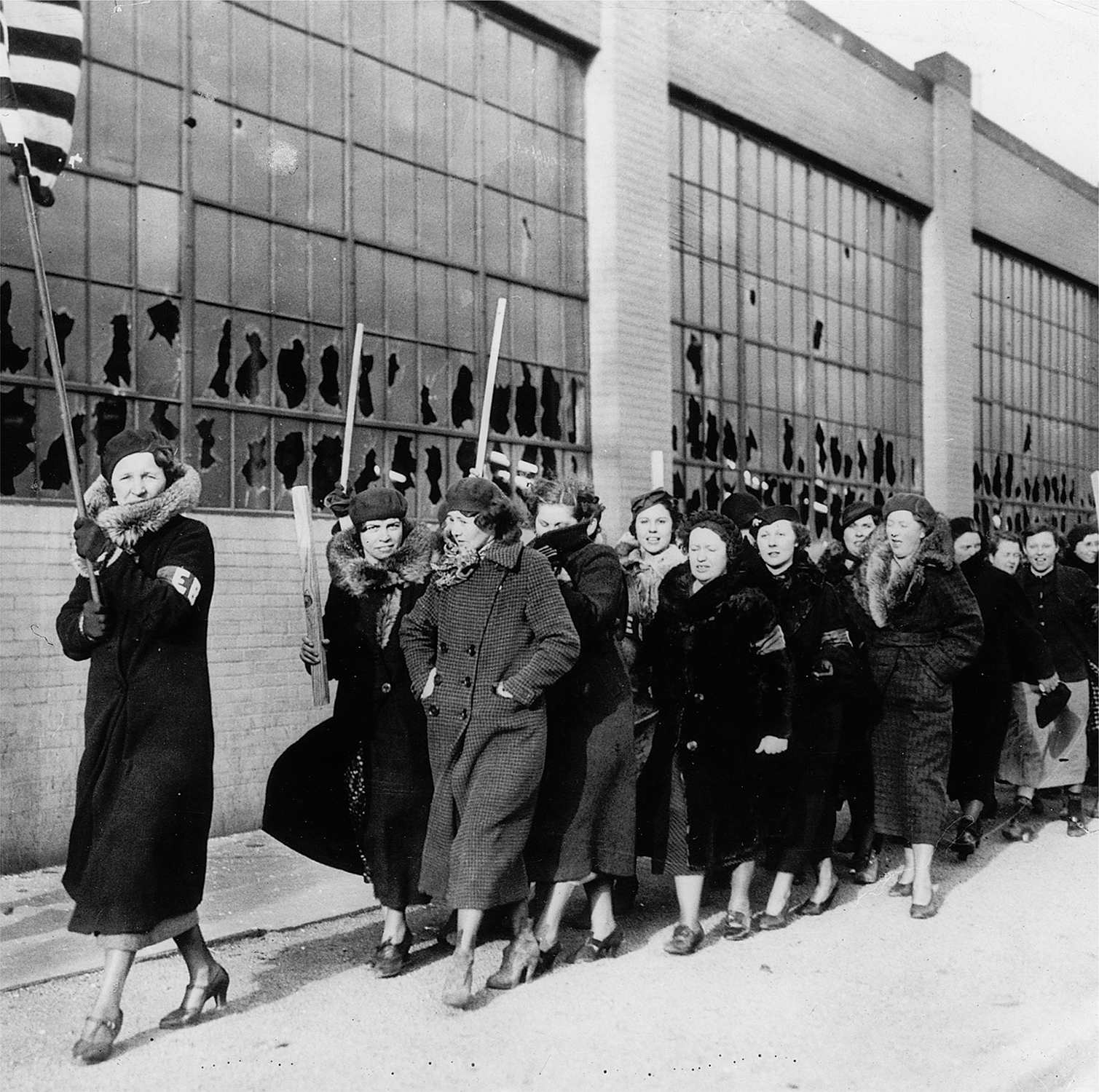The American Promise:
Printed Page 696
The American Promise Value
Edition: Printed Page 649
Empowering Labor
During the Great Depression, factory workers who managed to keep their jobs worried constantly about being laid off while their wages and working hours were cut. When workers tried to organize labor unions to protect themselves, municipal and state governments usually sided with employers. Since the Gilded Age, state and federal governments had been far more effective at busting unions than at busting trusts. The New Deal dramatically reversed the federal government’s stance toward unions. With legislation and political support, the New Deal encouraged an unprecedented wave of union organizing among the nation’s working people. When the head of the United Mine Workers, John L. Lewis, told coal miners that “the President wants you to join a union,” he exaggerated only a little. New Dealers believed that unions would counterbalance the organized might of big corporations by defending working people, maintaining wages, and replacing the bloody violence that often accompanied strikes with economic peace and commercial stability.
Violent battles on the nation’s streets and docks showed the determination of militant labor leaders to organize unions that would protect jobs as well as wages. In 1934, striking workers in Toledo, Minneapolis, San Francisco, and elsewhere were beaten and shot by police and the National Guard. In Congress, labor leaders lobbied for the National Labor Relations Act, a bill sponsored by Senator Robert Wagner of New York that authorized the federal government to intervene in labor disputes and supervise the organization of labor unions. The Wagner Act, as it came to be called, guaranteed industrial workers the right to organize unions, putting the might of federal law behind the appeals of labor leaders. If the majority of workers at a company voted for a union, the union became the sole bargaining agent for the entire workplace, and the employer was required to negotiate with the elected union leaders. Roosevelt signed the Wagner Act in July 1935, for the first time providing federal support for labor organization—
The achievements that flowed from the Wagner Act and renewed labor militancy were impressive. When Roosevelt became president in 1933, union membership—
Most of the new union members were factory workers and unskilled laborers, many of them immigrants, women, and African Americans. For decades, established AFL unions had no desire to organize factory and unskilled workers. In 1935, under the aggressive leadership of the mine workers’ John L. Lewis and the head of the Amalgamated Clothing Workers, Sidney Hillman, a coalition of unskilled workers formed the Committee for Industrial Organization (CIO; later the Congress of Industrial Organizations). The CIO, helped by the Wagner Act, mobilized organizing drives in major industries, including the bitterly antiunion automobile and steel industries.
The bloody struggle by the CIO-

The CIO hoped to ride organizing success in auto plants to victory in the steel mills. But after unionizing the giant U.S. Steel, the CIO ran up against determined opposition from smaller steel firms. Following a police attack that killed ten strikers at Republic Steel outside Chicago in May 1937, the battered steelworkers halted their organizing campaign. In steel and other major industries, such as the stridently antiunion southern textile mills, organizing efforts stalled until after 1941, when military mobilization created labor shortages that gave workers greater bargaining power.